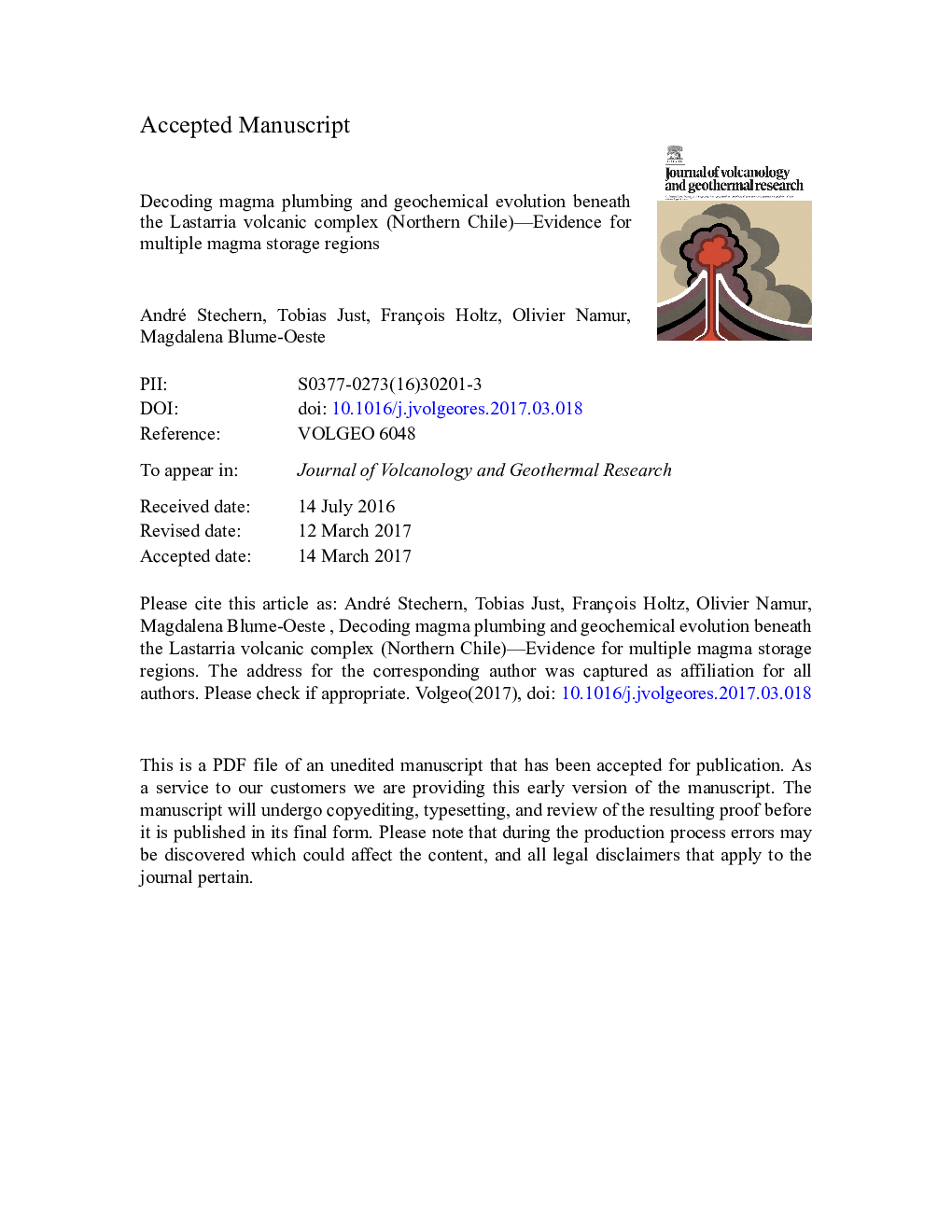| Article ID | Journal | Published Year | Pages | File Type |
|---|---|---|---|---|
| 5783747 | Journal of Volcanology and Geothermal Research | 2017 | 63 Pages |
Abstract
The petrology of quaternary andesites and dacites from Lastarria volcano was investigated to reconstruct the magma plumbing and storage conditions beneath the volcano. The mineral phase compositions and whole-rock major and trace element compositions were used to constrain temperature, pressure and possible mechanisms for magma differentiation. The applied thermobarometric models include two-pyroxene thermobarometry, plagioclase-melt thermometry, amphibole composition thermobarometry, and Fe-Ti oxide thermo-oxybarometry. The overall temperature estimation is in the range 840 °C to 1060 °C. Calculated oxygen fugacity ranges between NNO to NNO + 1. Results of the geo-barometric calculations reveal multiple magma storage regions, with a distinct storage level in the uppermost crust (~ 6.5-8 km depth), a broad zone at mid-crustal levels (~ 10-18 km depth), and a likely deeper zone at intermediate to lower crustal levels (> 20 km depth). The highest temperatures in the range 940-1040 °C are recorded in minerals stored in the mid-crustal levels (~ 10-18 km depth). The whole-rock compositions clearly indicate that magma mixing is the main parameter controlling the general differentiation trends. Complex zoning patterns and textures in the plagioclase phenocrysts confirm reheating and remobilization processes due to magma replenishment.
Keywords
Related Topics
Physical Sciences and Engineering
Earth and Planetary Sciences
Geochemistry and Petrology
Authors
André Stechern, Tobias Just, François Holtz, Magdalena Blume-Oeste, Olivier Namur,
